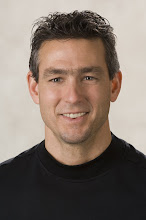
As the Vancouver Winter Olympics wind down this week, I am reminded of what makes Olympians so different from the rest of us.
And really, there are just three simple things: their bodies, their minds, and their soul.
From a physiological perspective, the most distinct difference between those humans, amateur athletes worldwide, and the general population is genetics. Don't get me wrong ... world class athletes become world class athletes through a tremendous amount of hard work, dedication, mental preparation, and nutritional diligence. You simply can't compete among the best of the best without the right attitude and effort (more on that below).
However, that effort really isn't what makes them different.
What makes them different is their inherited ability to recover and adapt to the physiological stress that that level of training places on their bodies.
Olympic Athletes endure thousands of hours of training to reach the fitness and athleticism required to compete on the ultimate world stage. In order to get stronger, and improve fitness, they put increasing burdens on the body. Recovering from this kind of stress requires proper nutrition, rest, and stretching.
It's the same thing the rest of us do when exercising for good health and fitness. We all put incrementally increased amounts of resistance, endurance, or intensity in our exercise programs to force the body to adapt. And we all recover with varied results.
Unfortunately, the speed with which your body rebuilds itself is primarily genetic.
Indeed, understanding individual that recovery rates, and how much volume and intensity can be put into an exercise program is one of the primary reasons why personal trainers exist at all: finding that fine line between progress and pain.
In their minds, Olympic athletes need to genuinely believe that they will have success. Everything they do is around the belief that all the hard work and sacrifice will eventually pay off. It's what drives them to endure. They expect to win.
In this regard, they have another distinct advantage over the rest of us. Nearly every Olympians has had early success in their lives that helped build confidence for additional success, that led to higher and higher levels of confidence in their pursuits. For the same reasons that the Chinese are good at math, gifted athletes become superstars through early and frequent re-enforcement of their talents that many Americans don't ever see with common exercise programs. As elite athletes are spiraling up to the stars, common Americans are spiraling downward into a sedentary, inactive lifestyle without the benefit of positive exercise experience and payoff.
A lot of the clients that we work with have tried, without any luck, dozens of programs and diets over the years only to end up right back where they started. So, in this regard, it's actually HARDER ... indeed, a LOT Harder ... for a middle aged adult who hasn't seen a lot of success with exercise to get fit than it is for an Olympic athlete to go from good to great. The confidence built upon early success matters enormously.
But above all else, what sets Olympians apart from the rest of humanity is what's in their hearts. A deep, burning desire to accomplish their goals is what makes Olympians Olympians. It's not enough to be interested in being an Olympian. As Linsday Vonn says, "You must go out and take it."
I often run into folks who share 'amazing' stories with me about how individuals went from fat to fit. Helping people do that for several decades now, there isn't much I find amazing anymore ... there really are no tricks, or secrets to exercise, and it's sad that the industry is overloaded with hype, mis information, and, in some cases flat out lies about pills, 6 minute training fads, and 'incredible' breakthrough fitness programming! It comes down to a powerful belief to accomplish their goals, a lot of hard work, and a burning desire to succeed.
I have really enjoyed these Winter Olympics, and am truly amazed with the degree to which athletes have taken their sport!
But I am mostly in awe of the many clients we've worked with over the years who have had the burning desire to succeed and have done so in spite of average genetics, and early exercise failure.
With a burning desire to succeed, they have discovered the most important Olympic training secret.




